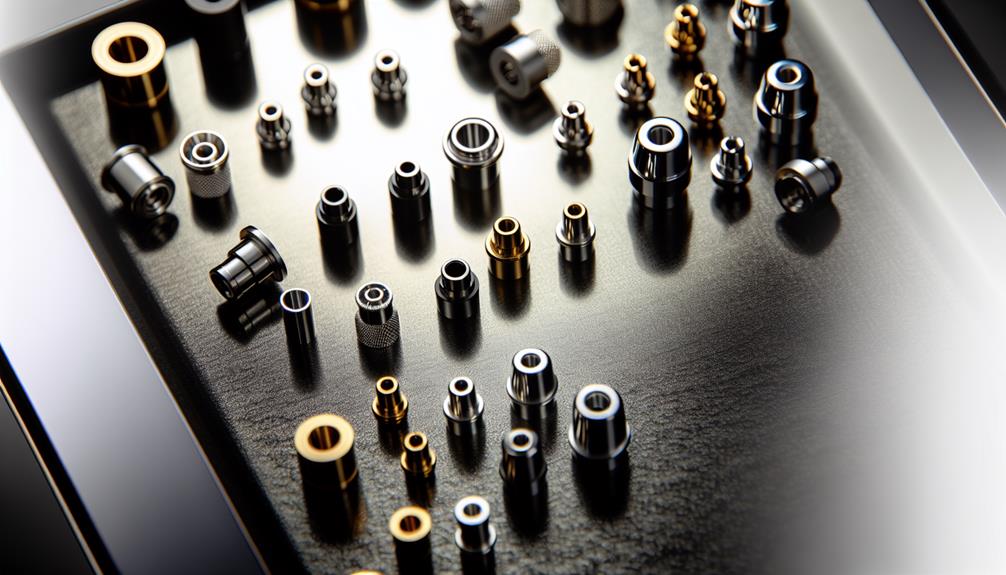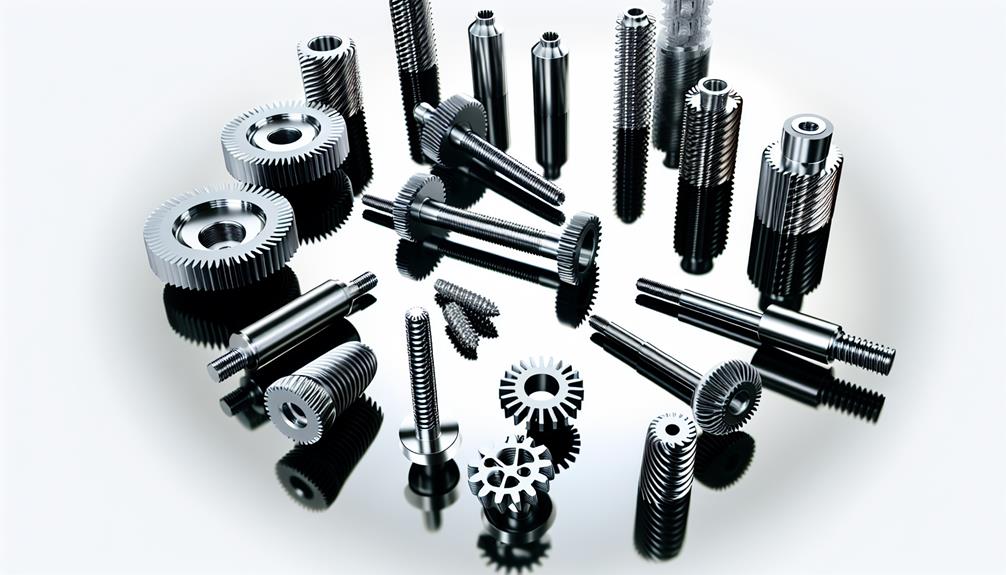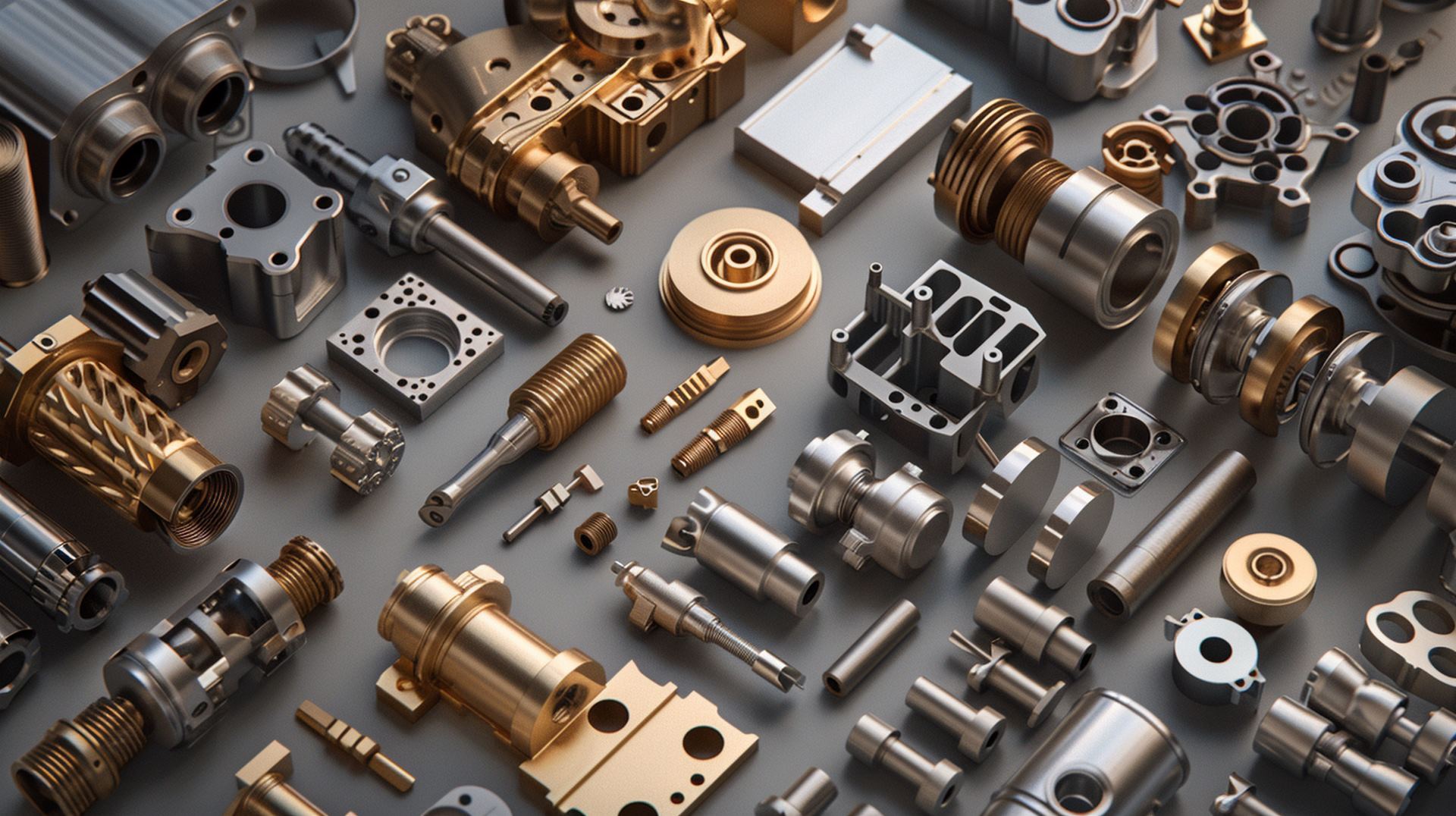Thread Rolling Process of Screws: The Basics
The thread rolling process of screws is a fundamental aspect of manufacturing that often goes unnoticed by the average consumer. However, understanding the basics of this process can provide valuable insights into the quality and durability of the screws we encounter in our daily lives.
From different screw thread forms to the benefits of thread rolling versus thread cutting, there is a wealth of knowledge to uncover. But what exactly is the difference between thread rolling and thread forming? How does the process work, and what factors should be considered?
In this discussion, we will explore these questions and shed light on the common defects that can occur during the thread rolling process. So, join us as we delve into the world of screw manufacturing and uncover the intricacies of the thread rolling process.
Key Takeaways
- Thread rolling produces stronger and more accurate threads compared to other methods.
- It is suitable for soft metals but not practical for hard materials above 40 Rockwell C.
- Thread rolling provides superior production quality, harder and stronger threads, and lower costs compared to thread cutting.
- Factors such as chamfer angle, feeding methods, thread rolling speeds, and the use of coolant and lubricant greatly impact the success of the thread rolling process.
1. Thread Rolling Process of Screws
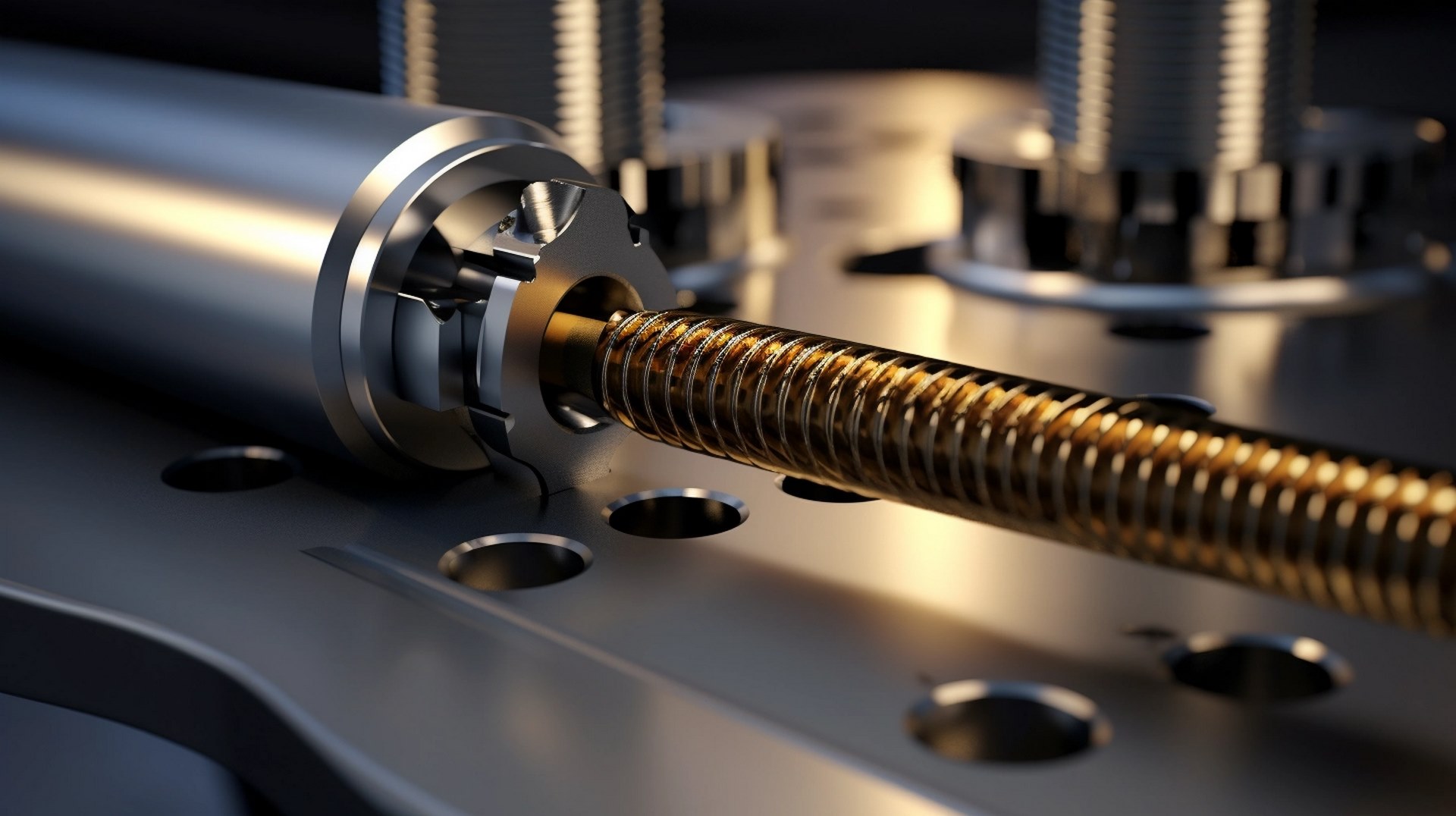
The thread rolling process of screws involves deforming metal stock through the use of dies to create external threads along the surface. There are different rolling techniques used in this process, each with its own advantages and limitations.
One of the main advantages of thread rolling is that it produces a stronger surface and dimensional accuracy compared to other threading processes. The threads formed through thread rolling have high thread strength without the need for secondary heat treatment. Additionally, thread rolling provides good surface finishes without the need for secondary polishing. This results in precise threading with high accuracy over long runs. Another advantage is that rolled threads have a lower coefficient of friction, which improves power transmission efficiency.
However, there are also limitations to thread rolling. It is not practical for hard materials above 40 Rockwell C and is limited to soft metals. This process requires precise fabrication of dies, which can be more expensive than tooling used in other processes. Furthermore, the stock diameter must be precise for proper thread formation, and thread rolling can decrease tool life for hard materials.
2. Different Screw Thread Forms
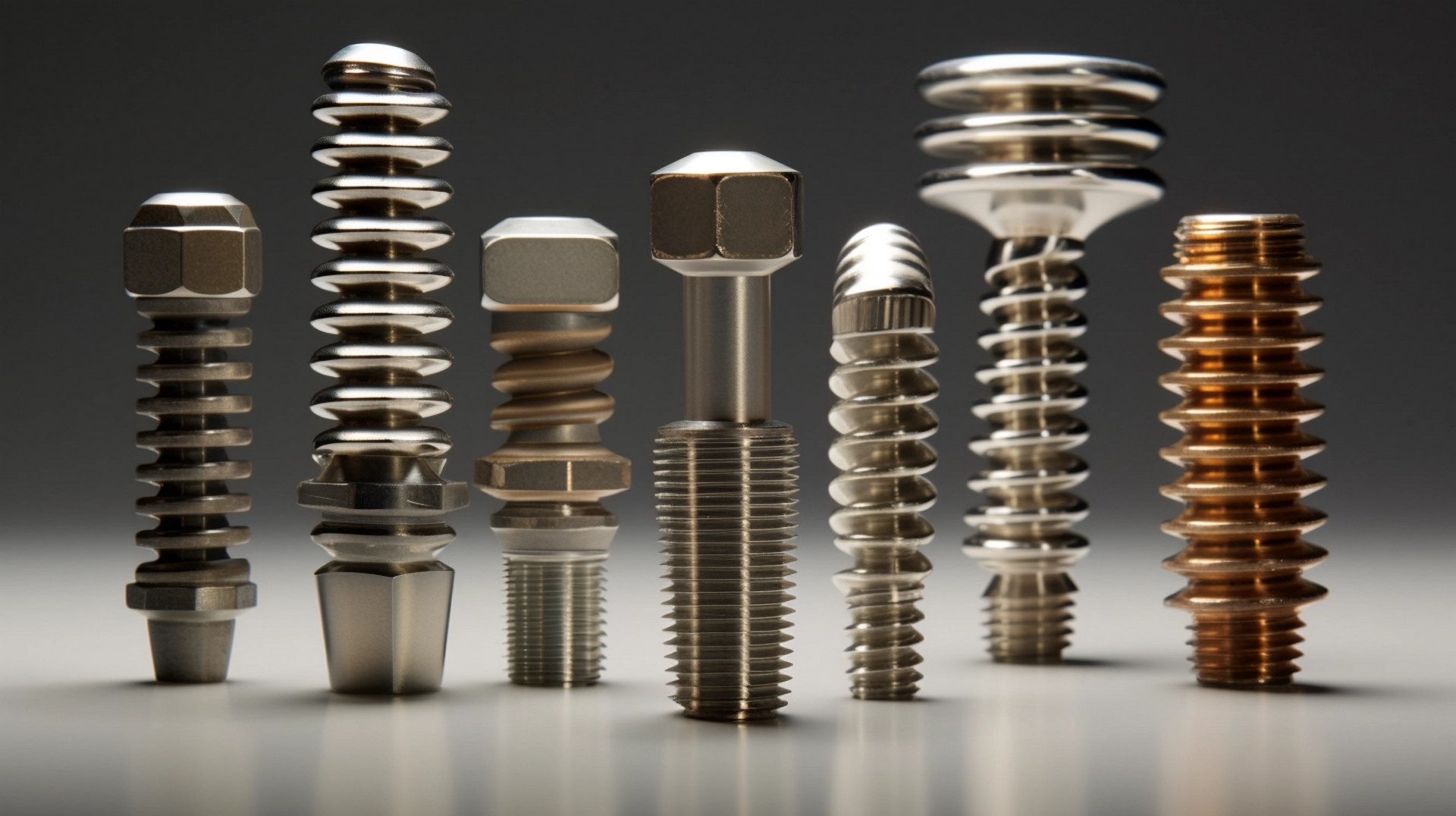
There are various types of screw thread forms used in different applications and industries. One of the key differences in screw thread forms is whether they are produced through thread rolling or thread cutting. Thread rolling is a process where the threads are formed by displacing the material instead of removing it, resulting in stronger threads with improved surface finish and dimensional accuracy. On the other hand, thread cutting involves removing material to form the threads.
Each screw thread form has its own advantages and is suitable for specific applications. The V-thread, also known as the American National Thread or British Whitworth Thread, is a triangular thread form with sharp crests and roots. It is widely used and has been replaced by the Unified Thread, which has rounded or flat crests and roots. The Unified Thread Standard (UTS) consists of series such as Unified Fine (UNF), Unified Coarse (UNC), Unified Extra Fine (UNEF), and Unified Special (UNS).
Other screw thread forms include the metric thread, square thread, Acme thread, buttress thread, and knuckle thread. The metric thread was developed to transition from imperial-based measurements to the metric system. Square threads are ideal for power transmission but have manufacturing limitations. Acme threads are stronger and easier to machine than square threads. Buttress threads are designed to transmit high loads in one direction, while knuckle threads have rounded crests and roots to prevent debris interference.
3. Benefits of Thread Rolling Vs. Thread Cutting
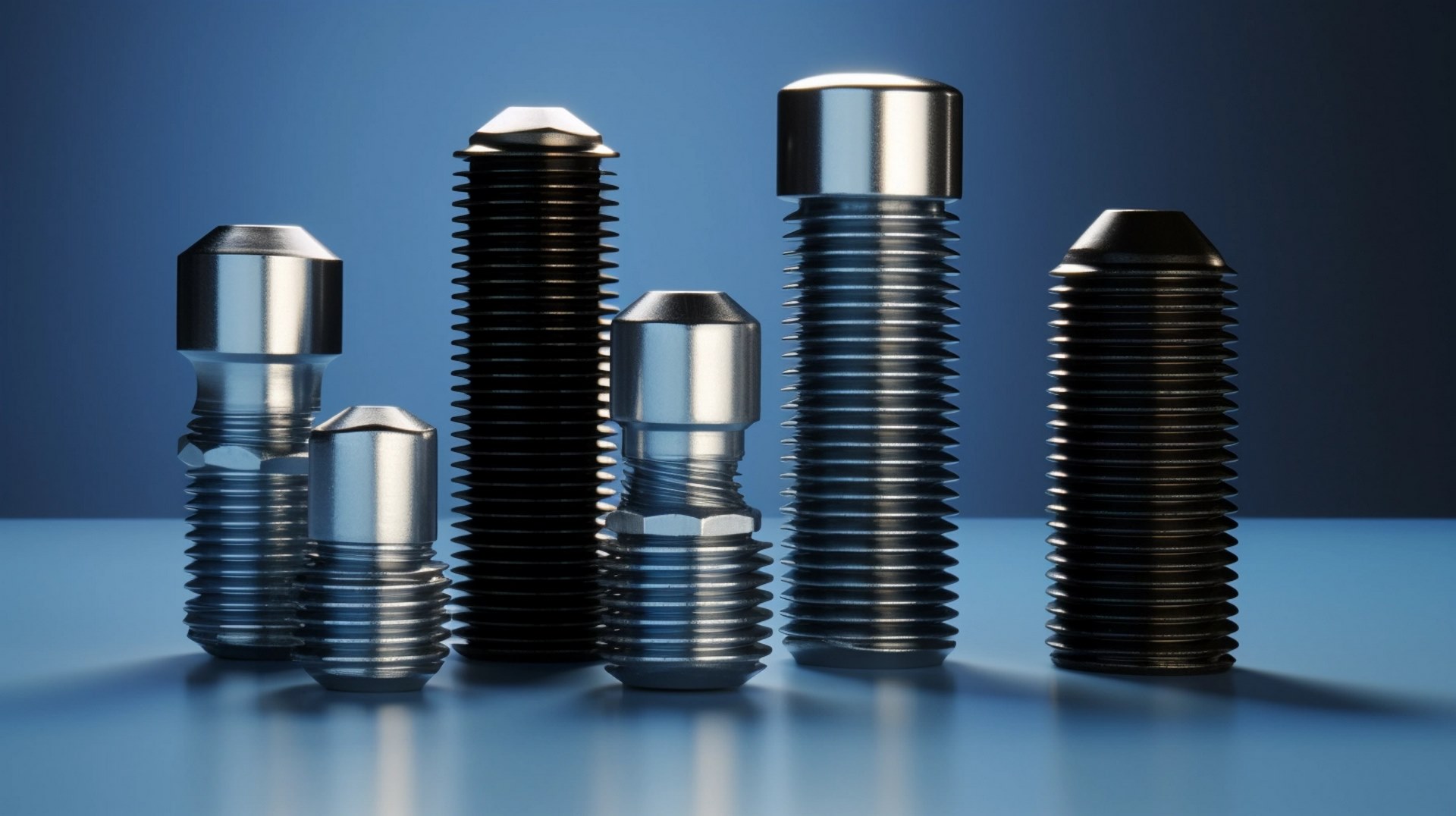
When considering the benefits of thread rolling versus thread cutting, it is important to analyze the advantages of each method.
Thread rolling provides superior production quality with harder and stronger threads, as well as lower costs and shorter lead times.
On the other hand, thread cutting is more suitable for materials with high tensile strength and larger material stock.
Understanding these distinctions can help determine the most appropriate method for specific applications.
3.1 Benefits of Thread Rolling
When comparing the benefits of thread rolling versus thread cutting, several advantages stand out.
Firstly, thread rolling produces high thread strength, ensuring the durability of the screws.
Additionally, thread rolling results in good surface finishes, enhancing the overall quality and appearance of the threads.
Lastly, precision threading achieved through thread rolling leads to lower coefficients of friction, reducing wear and tear and increasing the efficiency of the screws.
High Thread Strength
The process of thread rolling offers significant benefits in terms of achieving high thread strength compared to the traditional method of thread cutting.
With thread rolling, high thread density can be achieved, resulting in stronger and more durable screw threads.
Thread strength testing has shown that thread rolled screws have better resistance to stripping and shearing forces.
This makes thread rolling a preferred choice in various applications where thread strength is crucial, such as automotive, aerospace, and heavy machinery industries.
Good Surface Finishes
One advantage of thread rolling over the traditional method of thread cutting is the ability to achieve good surface finishes, providing several benefits in various industries such as automotive, aerospace, and heavy machinery.
Thread rolling produces a smoother surface compared to thread cutting, resulting in lower surface roughness. This improved surface finish reduces friction and wear, enhancing the performance and lifespan of screws.
Additionally, thread rolling allows for easy application of polishing techniques and surface coatings to further enhance the quality and durability of the threads.
Precision Threading
Thread rolling offers significant advantages over thread cutting when it comes to precision threading.
- Precision threading using thread rolling techniques ensures accurate and consistent thread dimensions.
- Thread rolling allows for the creation of threads with superior surface finish and improved strength.
- Advanced threading methods, such as cold rolling, can produce threads with excellent surface hardness and resistance to wear.
Lower Coefficient of Friction
With its ability to reduce the coefficient of friction, thread rolling surpasses thread cutting in its benefits.
By creating threads through plastic deformation rather than material removal, thread rolling results in a smoother surface finish and lower friction.
This leads to reduced wear on the threaded components, increased efficiency in power transmission, and improved durability of the screws.
Lower Production Lead Times
The implementation of thread rolling in the production process offers the advantage of significantly reduced lead times compared to thread cutting. This reduction in lead times is achieved through various means, including:
- Streamlined production processes: Thread rolling eliminates the need for multiple tool changes and setup adjustments, reducing downtime and improving production efficiency.
- Optimized manufacturing processes: By using thread rolling, manufacturers can achieve faster and more consistent production rates, resulting in shorter lead times and improved overall productivity.
Lower Cost Brought by the Efficient Use of Material
By utilizing the efficient use of material, thread rolling offers significant cost savings compared to thread cutting.
This cost reduction is achieved through material efficiency, as thread rolling eliminates the need for excess material removal that is required in thread cutting.
With thread rolling, the material is cold formed into the desired thread shape, resulting in minimal waste.
This efficient use of material translates into substantial cost savings for manufacturers, making thread rolling a cost-effective choice for producing screws.
Not Practical for Hard Materials
Thread rolling, although highly cost-effective for producing screws, is not practical for hard materials due to their inherent strength and resistance to deformation. The hard material limitations of thread rolling necessitate the exploration of alternative threading methods.
However, it is important to note the advantages that the thread rolling process brings, such as improved thread strength, increased surface finish, and reduced material waste. These benefits make it a preferred choice for threading softer materials where cost-effectiveness is a priority.
3.2 Benefits of Thread Cutting
Thread cutting offers several benefits over thread rolling.
Firstly, it can handle materials with high tensile strength, allowing for the creation of strong and durable threads.
Additionally, thread cutting is suitable for working with leaden materials, making it a versatile option for various applications.
Lastly, thread cutting is compatible with larger material stock, providing flexibility in the manufacturing process.
These advantages make thread cutting a valuable technique in the production of screws and other threaded components.
Handles Materials with High Tensile Strength
When it comes to handling materials with high tensile strength, the benefits of thread cutting are undeniable.
- High Thread Strength:
Thread cutting provides screws with threads that have high tensile strength, making them suitable for applications where strong connections are required. The threading process ensures that the threads are robust and capable of withstanding high loads without experiencing failure or deformation. - Good Surface Finishes:
Thread cutting results in smooth and precise threads, ensuring good surface finishes on the screws. This is crucial in applications where aesthetics and functionality are important, as it provides a secure fit and reduces the risk of damage or wear. - Precision Threading:
Thread cutting allows for precise threading, ensuring accurate and consistent screw dimensions. This is essential in industries where tight tolerances are required, as it guarantees the proper fit and functionality of the screws in various applications.
Works with Leaden Materials
The process of thread cutting offers distinct advantages when working with leaden materials, particularly in comparison to thread rolling.
Leaden materials are known for their low tensile strength and malleability.
Thread rolling, on the other hand, may not be suitable for such materials due to its limitations in forming threads in soft and ductile materials.
As an alternative, other thread forming methods such as thread cutting can be employed to ensure optimal results when working with leaden materials.
Compatible with Larger Material Stock
In contrast to thread rolling, thread cutting presents distinct advantages when it comes to working with larger material stock, particularly in relation to the limitations of thread rolling in forming threads in soft and ductile materials.
- Compatible Materials: Thread cutting is compatible with a wider range of materials, including those that are softer and more ductile.
- Soft materials: Thread cutting can easily form threads in soft materials such as aluminum and brass.
- Ductile materials: Thread cutting is effective in forming threads in ductile materials like copper and mild steel.
4. What's the Difference between Thread Rolling and Thread Forming?
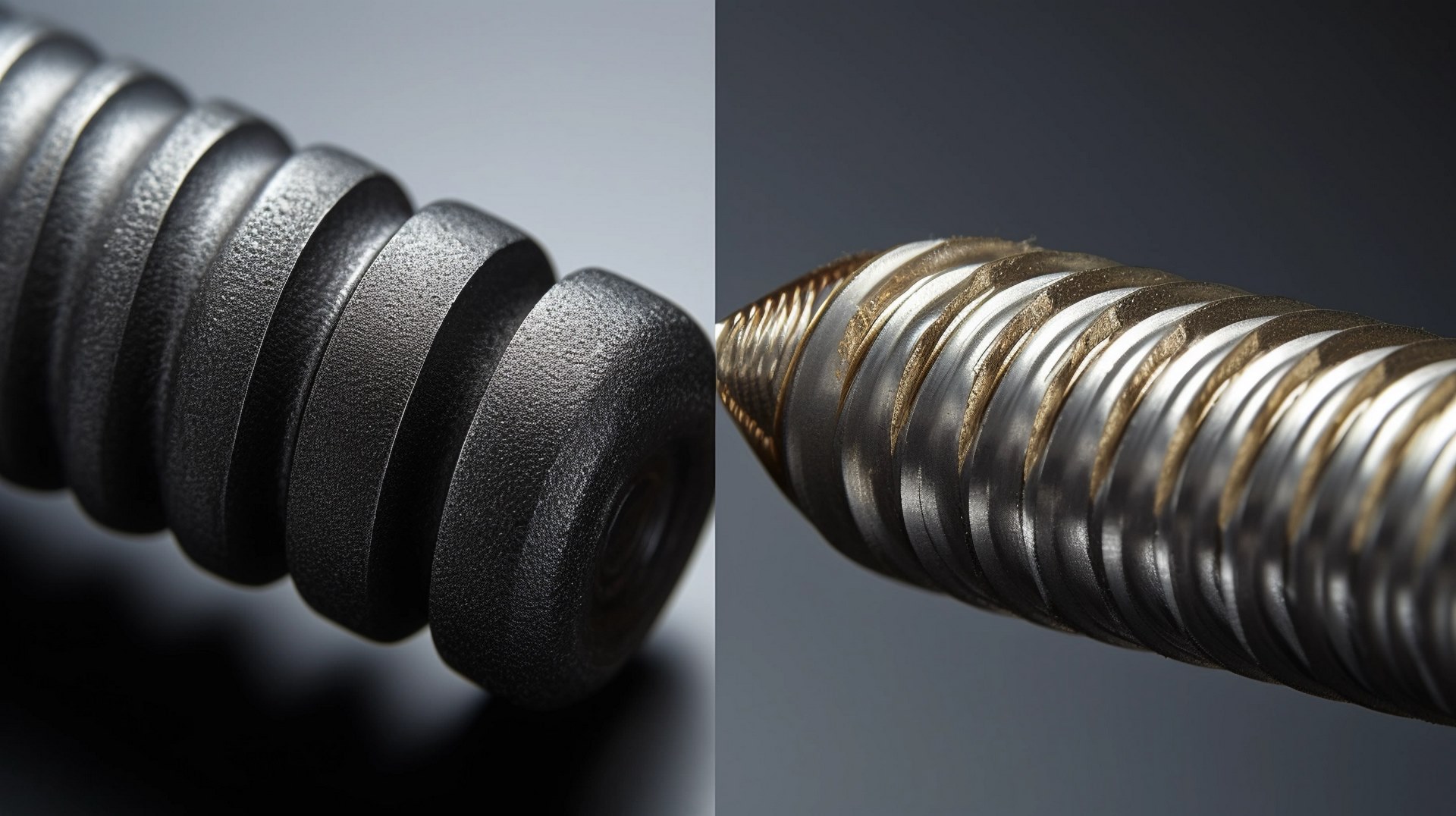
Thread rolling and thread forming are two distinct manufacturing processes used to create threading in materials, each with its own unique characteristics and applications.
Thread forming involves the creation of internal threading using a thread rolling die that is pressed onto the workpiece or object. This process modifies the workpiece itself, making it easier to install screws and providing a strong and reliable connection.
On the other hand, thread rolling is used to create external threading on screws or fasteners by cutting away material from the screw's exterior using a pre-shaped die.
While thread forming offers advantages such as ease of installation and a strong connection, thread rolling has its own set of limitations.
One limitation of thread rolling is that it requires a specialized machine and die, making it less versatile compared to thread cutting, which can be done using a variety of tools. Additionally, thread rolling is not suitable for all materials, as it can cause material deformation or damage in certain cases.
5. How It Works: Overview of Threading Processes
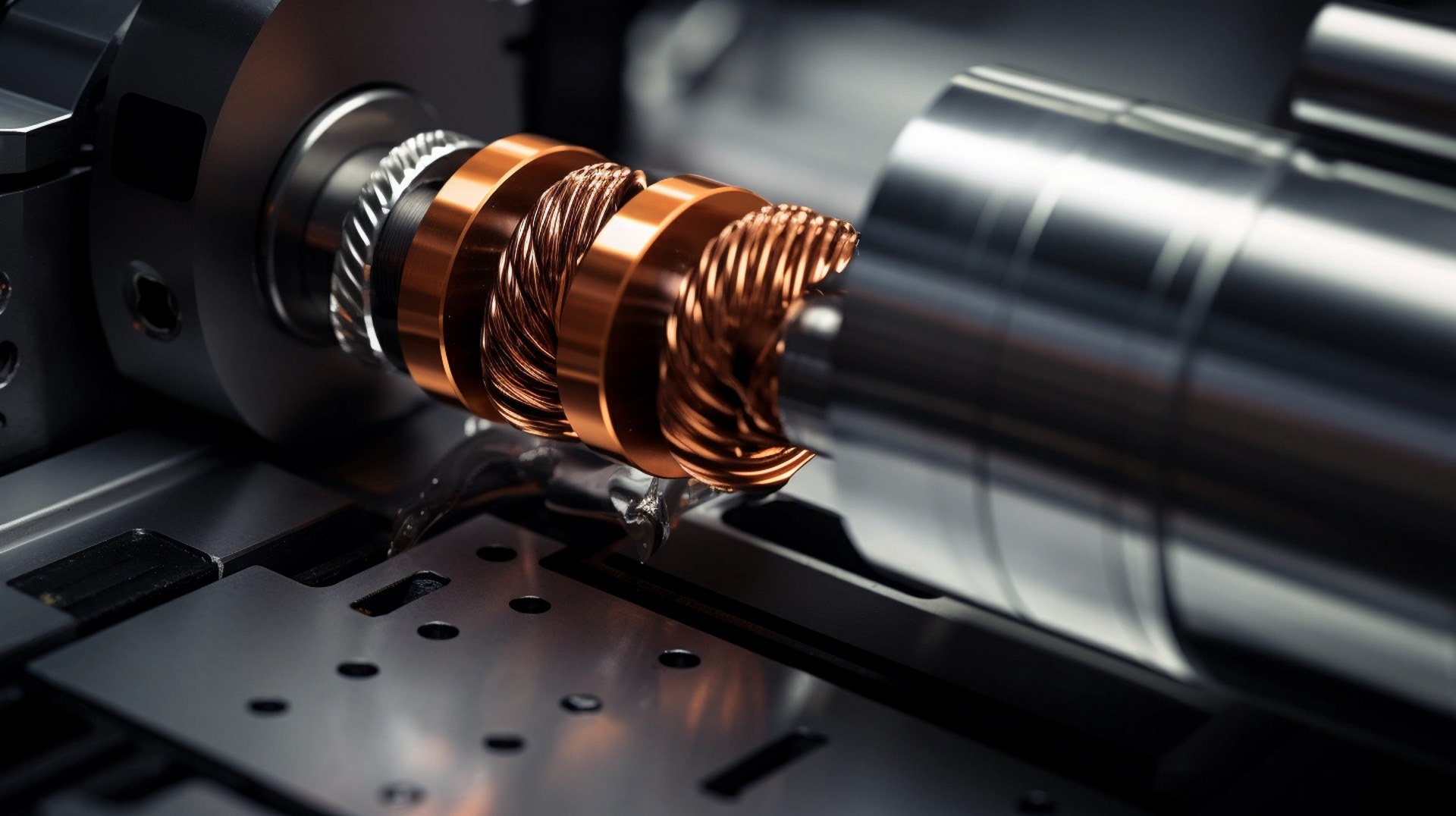
In the process of threading, there are several methods that can be used, such as tapping, die threading, single-point cutting, chasing, and milling.
Each method has its own advantages and disadvantages, and understanding how each process works is important in determining the most suitable method for a specific application.
This overview of threading processes will provide a brief introduction to each method and lay the foundation for further discussion on their individual characteristics and applications.
Tapping
Tapping is a commonly used threading process that involves creating internal threads in a pre-drilled hole. This method offers several advantages such as versatility, as it can be used on various materials including metal, plastic, and wood. Tapping also allows for precise thread depth and pitch control, ensuring accurate fitting of screws or bolts. Additionally, the tapping process is relatively quick and cost-effective compared to other threading methods.
However, there are a few disadvantages to consider. Tapping can be challenging for brittle materials as it may cause cracking or damage. It also requires a skilled operator to ensure proper alignment and thread quality.
The tapping process typically involves drilling a hole, followed by tapping the hole using a tap tool, and finally, cleaning the threads to remove any debris or chips.
Die Threading
The process of die threading is another commonly used method for creating external threads on screws, providing an alternative to tapping. Die threading offers several advantages over other threading processes, such as improved thread quality, increased thread strength, and faster production rates.
The die threading process involves using a set of dies, which are circular plates with thread profiles, to cut or form the threads onto the workpiece. The dies are mounted onto a die head, which rotates and applies pressure to the workpiece, creating the threads.
This method is often preferred for producing threads on large quantities of screws, as it allows for high-speed and efficient production. Die threading is widely used in industries such as automotive, aerospace, and construction, where screws with precise and durable threads are required.
Single-Point Cutting
Single-point cutting is a machining process commonly employed for creating threads, providing a precise and efficient method for achieving accurate thread profiles on screws. This process involves using a single-point cutting tool to remove material from the workpiece, gradually forming the desired thread shape.
Here are the key aspects of single-point cutting:
- Advantages of single-point cutting:
- Allows for precise control over thread forms, ensuring accurate dimensions and profiles.
- Provides high surface finish quality, resulting in smoother and more reliable threads.
- Thread cutting process:
- The single-point cutting tool is fed into the workpiece at a specific depth and speed.
- The tool cuts grooves into the workpiece, gradually forming the thread shape.
- Multiple passes may be required to achieve the desired thread depth and accuracy.
Chasing
Chasing is a threading process that involves using a die to cut or form threads on a workpiece. The chasing process utilizes thread-chasing tools, which are typically in the form of dies with cutting edges. These tools are designed to match the desired thread profile and size.
The chasing process is commonly used in industries where high-precision threads are required, such as automotive and aerospace.
One of the advantages of the chasing process is its ability to produce threads with high accuracy and consistency. The use of thread-chasing tools ensures that the threads are formed to the correct specifications, resulting in a tight fit and optimal functionality of the threaded components.
Additionally, the chasing process allows for efficient production rates, making it a preferred choice for mass-production applications. The simplicity and cost-effectiveness of the chasing process make it a popular choice for creating threads on various workpieces.
Milling
The milling process is another threading technique commonly used in industries that require precise and efficient production of threaded components, seamlessly building on the advantages of the chasing process. It involves using milling tools to cut the desired threads into a workpiece.
Here are two important aspects of the milling process:
- Milling applications:
- Milling is often used in industries such as automotive, aerospace, and manufacturing, where high-quality threaded components are required.
- It is suitable for both internal and external threading applications, offering versatility in producing various thread sizes and shapes.
- Milling process:
- The milling process begins with securing the workpiece on a milling machine.
- The milling tools, such as end mills or thread mills, rotate and move along the workpiece to remove material and create the desired threads.
Grinding
Grinding is a precision machining process widely utilized in the production of threaded components, ensuring accuracy and surface finish. The grinding process involves the use of abrasive particles to remove material from the workpiece, resulting in the desired shape and dimensions.
There are various grinding techniques used in the industry, such as centerless grinding, cylindrical grinding, and surface grinding. Centerless grinding is commonly used for producing cylindrical components with high precision and tight tolerances.
Cylindrical grinding, on the other hand, is suitable for achieving precise roundness and straightness. Surface grinding is employed to achieve a smooth and flat surface finish.
These grinding techniques play a crucial role in thread production, ensuring the final product meets the required specifications in terms of dimensions and surface quality.
Rolling
Rolling is a highly efficient threading process used in the manufacturing industry to produce high-quality screw threads. Unlike thread cutting, which removes material to create the desired thread form, rolling displaces the material to form the thread. This process offers several advantages:
- Improved thread strength: Rolling creates a hardened surface on the thread, resulting in increased strength and resistance to wear.
- Enhanced thread accuracy: The rolling process produces threads with precise dimensions and smooth surfaces, ensuring proper fit and function.
- Greater thread consistency: Rolling eliminates variations in thread pitch and diameter, ensuring uniformity throughout the entire length of the screw.
- Increased production speed: Rolling can be performed at high speeds, allowing for faster production rates compared to thread cutting methods.
6. Factors to Consider in Thread Rolling
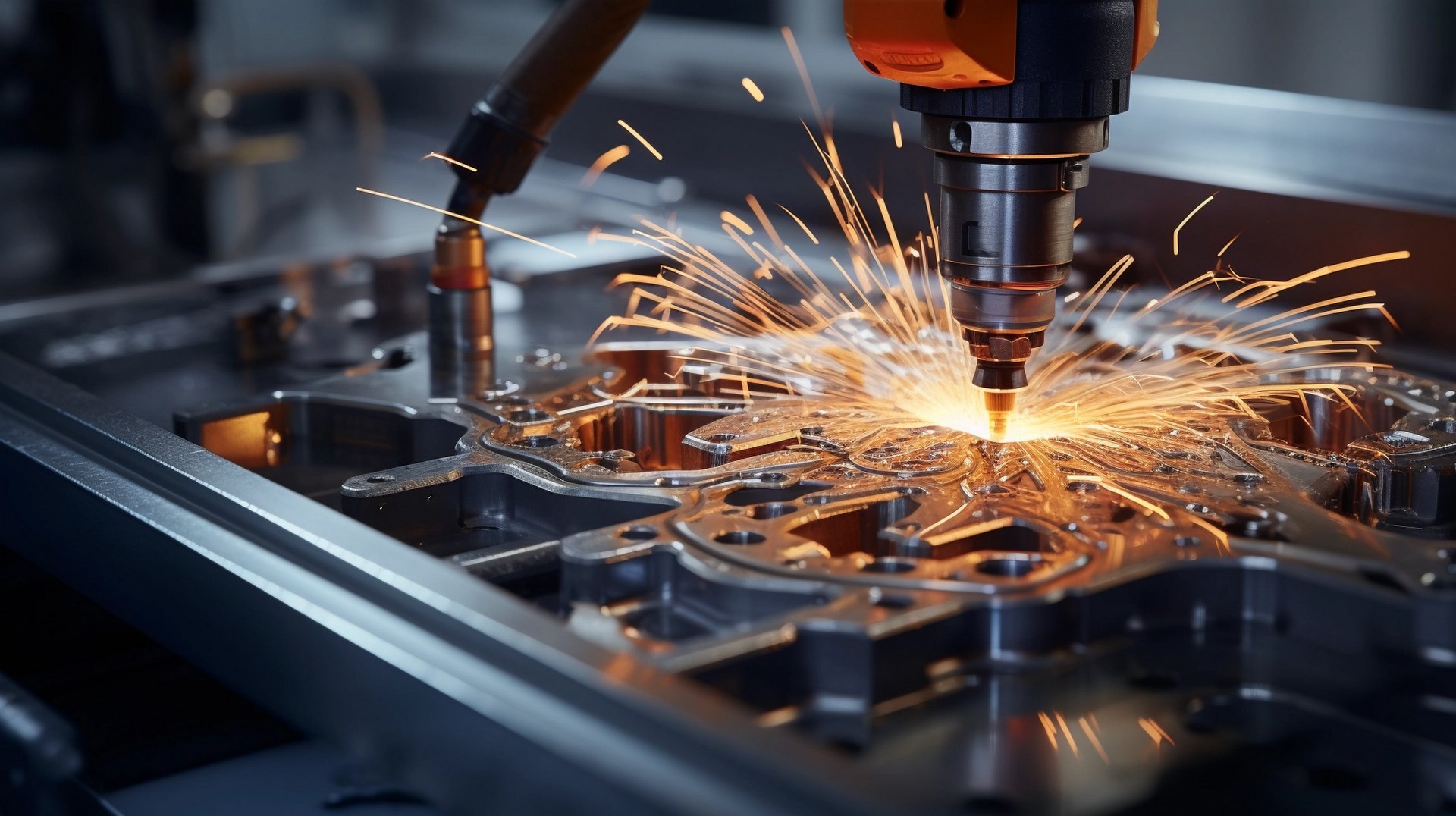
When it comes to thread rolling, there are several important factors to consider.
First, the tools and design considerations must be taken into account to ensure proper threading.
Material requirements, such as hardness and elongation factor, also play a crucial role in the thread rolling process.
Additionally, the stock diameter and chamfer angle need to be accurately determined, and the feeding technique must be chosen wisely.
These factors are essential for achieving high-quality threaded products.
Tools and Design Considerations
To ensure successful thread rolling, designers need to consider various factors, including the diameter of the part blank and the adjustment of the blank diameter to achieve the desired thread diameter. When designing parts with rolled threads, designers must account for how the metal flows across the rolled surface rather than being removed, unlike with cut thread parts.
Here are some factors to consider in thread rolling:
- The diameter of the part blank should be slightly smaller than the maximum part pitch diameter.
- Adjusting the blank diameter by 0.001 inches changes the thread diameter by 0.003 inches, with a 3:1 ratio after rolling.
- Harder materials may require a smaller chamfer angle to maintain thread roll life.
- The workface of the thread roll needs to be longer than the thread itself to accommodate material displacement.
- Thread rolling can produce straight or tapered threads on parts.
Considering these factors and using the appropriate tools and design considerations, thread rolling offers benefits over thread cutting, such as better thread strength and increased productivity.
Material Requirements
Considering the various factors discussed in the previous subtopic, such as the diameter of the part blank and the adjustment of the blank diameter, it is essential to also take into account the material requirements when it comes to thread rolling.
Thread rolling has certain limitations, and choosing the right material is crucial for successful thread rolling operations. To utilize thread rolling effectively, the material should have an elongation factor of 12% or more, ensuring it can handle the displacement forces involved. Materials like cast iron, which are too brittle, are not suitable for thread rolling and must be cut instead.
Soft metals are generally more formable and better suited for thread rolling, while harder metals can wear down the thread rolls faster. However, if the blank diameter is not prepared correctly with a sharp cutting insert, even materials like stainless steel can cold work the blank and reduce thread roll life.
Taking these material requirements into consideration, thread rolling offers advantages such as better form geometry, finish, fatigue resistance, strength, and wear resistance for the finished product.
Stock Diameter
The stock diameter plays a crucial role in determining the success of thread rolling operations. When considering the stock diameter for thread rolling, there are several factors to take into account:
- Thread rolling benefits:
- Improved strength and fatigue resistance: Thread rolling strengthens the material, enhancing its resistance to fatigue and increasing its overall strength.
- Cost-effectiveness: Thread rolling eliminates the need for additional machining processes, reducing production costs.
- Stock diameter considerations:
- Material flow: The stock diameter should be chosen carefully to ensure proper material flow during the rolling process. If the diameter is too small, it may result in insufficient material flow and weak thread formation.
- Thread profile: The stock diameter should be selected based on the desired thread profile to achieve accurate and consistent threading.
- Thread rolling limitations:
- Material hardness: The stock diameter must be compatible with the hardness of the material being rolled. Excessive hardness can result in cracking or breakage during the rolling process.
- Machine capacity: The stock diameter should be within the machine's capacity to ensure smooth and efficient thread rolling operations.
Considering these factors when determining the stock diameter for thread rolling operations is essential to achieve optimal results and avoid any limitations that may arise.
Chamfer Angle
One important factor to take into account in thread rolling operations is the chamfer angle. The chamfer angle refers to the angle formed between the chamfer design and the thread surface. It plays a crucial role in the thread rolling process as it affects the overall quality and performance of the threaded screws.
The chamfer angle is designed to facilitate the thread rolling process by providing a smooth transition between the unthreaded portion and the threaded portion of the screw. It helps in reducing the friction and stress concentration during the chamfering process, resulting in improved thread rolling advantages such as enhanced thread strength and reduced chance of thread damage.
The chamfer design and chamfering process should be carefully considered to ensure optimal results in thread rolling operations. By selecting the appropriate chamfer angle, manufacturers can achieve high-quality threaded screws that meet the required specifications and standards.
Feeding
In thread rolling operations, the feeding process is a critical factor to consider for achieving optimal results and ensuring the quality and performance of threaded screws. Proper feeding methods are essential to ensure that the material is fed into the thread rolling machine accurately and consistently. This helps to prevent any variations in thread form or size, which could compromise the functionality of the screws.
When considering the feeding process in thread rolling, there are several factors to take into account:
- Material Properties:
- The material's hardness and ductility can affect the feeding process. Softer materials may require different feeding methods compared to harder ones.
- Thread Rolling Machine:
- The design and capabilities of the thread rolling machine play a significant role in determining the feeding method. Different machines may have specific requirements or limitations.
Thread Rolling Speeds
To achieve optimal thread rolling results, it is crucial to carefully consider the factors that affect thread rolling speeds.
Thread rolling is a versatile process used in various applications, such as manufacturing screws, bolts, and other threaded components. One of the main advantages of thread rolling is its ability to create strong and precise threads with excellent surface finish.
However, there are certain limitations to thread rolling, including the speed at which the process can be performed. The speed of thread rolling depends on several factors, including the material being rolled, the diameter and pitch of the thread, and the type of thread rolling machine used.
It is important to select the appropriate speed to ensure the desired thread quality while avoiding any potential damage to the machine or workpiece.
Coolant and Lubricant
The selection of an appropriate coolant and lubricant is a crucial factor to consider in the thread rolling process. The right coolant can help dissipate heat generated during the rolling process, while the lubricant serves as a barrier between the screw and the rolling dies, reducing friction and wear.
When selecting a coolant, several factors should be taken into account, such as the material being rolled, the speed of the rolling process, and the desired surface finish. Additionally, it is important to consider the compatibility of the coolant with the material being rolled to avoid any potential chemical reactions or damage to the workpiece.
Similarly, the application of the lubricant is also essential. It should be applied in the right quantity and at the right intervals to ensure effective lubrication throughout the rolling process. This helps reduce the risk of galling and improves the overall quality of the threaded screws.
7. Common Defects of Thread Rolling Process
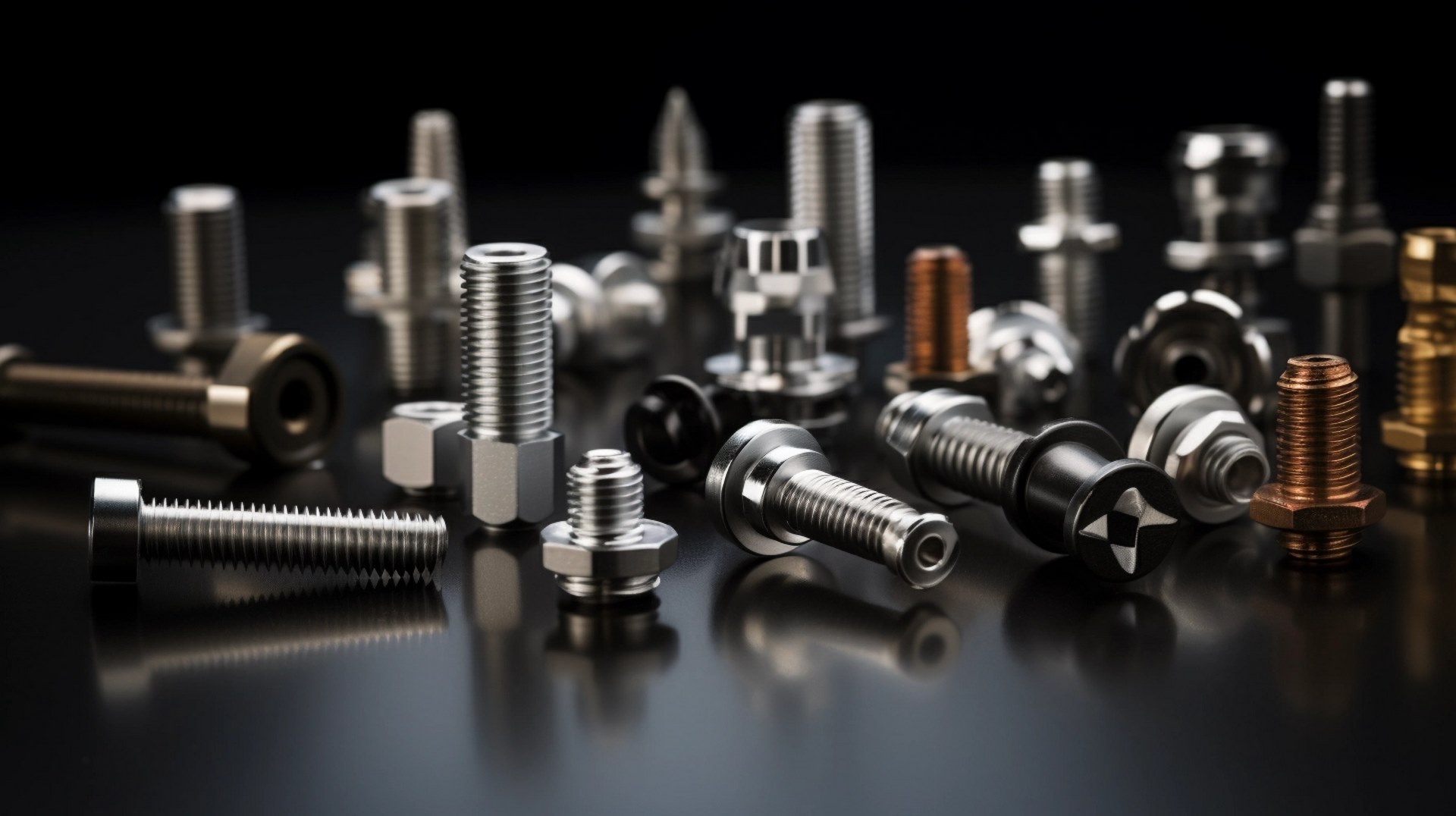
During the thread rolling process, several common defects can occur, affecting the overall quality of the threads. These defects include:
- Truncated thread crests
- Flaking
- Drunken threads
- Curved pitch line
- Out-of-tolerance helix angle
Identifying the root causes of these defects is crucial in implementing effective solutions to minimize or eliminate these issues. Some of the factors that can contribute to these defects include:
- Stock dimensions
- Roller alignment
- Material hardness
Truncated Thread Crest
One of the common defects in the thread rolling process is the presence of a truncated thread crest. This defect occurs when the thread crest is not properly formed during the rolling process, resulting in a flat or shortened thread crest. It can lead to issues such as reduced thread strength, poor thread engagement, and increased risk of thread stripping or failure.
However, in some cases, intentionally truncating the thread crest can offer certain advantages. These include:
- Improved thread fit: Truncating the thread crest can help achieve a tighter fit between mating threads, reducing the risk of thread galling or seizing.
- Enhanced fatigue resistance: By reducing the stress concentration at the thread crest, truncation can improve the fatigue life of the threaded component.
- Better sealing properties: A truncated thread crest can provide a better seal between threaded components, minimizing the risk of leakage in certain applications.
Flaking
Flaking is a prevalent defect that can occur during the thread rolling process, leading to compromised thread integrity and performance. This defect is typically caused by excessive pressure or improper heat treatment of the material being rolled.
Flaking refers to the formation of flakes or scales on the surface of the rolled thread. Flakes can weaken the thread, making it susceptible to breakage under stress. Moreover, flaking can also lead to poor thread engagement and reduced functional performance of the screw.
To prevent flaking, it is crucial to carefully control the rolling parameters, such as the rolling pressure and speed, as well as ensure proper heat treatment of the material. Regular inspection and testing should also be conducted to detect and address any flaking issues promptly.
Drunken Threads
Drunken threads are a common defect that can occur during the thread rolling process, affecting the overall quality and performance of the screws. These threads are characterized by an uneven and wavy appearance, resembling the shape of a drunken person's walk. The dangers of drunken threads lie in their negative impact on the functionality and reliability of the screws.
They can lead to reduced strength, increased friction, and a higher likelihood of loosening or failure under stress. Fortunately, there are preventive measures that can be taken to minimize the occurrence of drunken threads. These include ensuring proper alignment of the thread rolling dies, maintaining optimal rolling parameters, and regularly inspecting the rolled threads for any signs of defects.
Failing to address the issue of drunken threads can have serious consequences, such as compromised product integrity, customer dissatisfaction, and potential safety hazards.
Curved Pitch Line
The occurrence of a curved pitch line is a prevalent defect that can arise during the thread rolling process, significantly impacting the quality and functionality of screws.
A curved pitch line refers to a situation where the pitch line of the thread is not straight but has a noticeable curve. This defect can result from various factors, such as improper machine setup, incorrect thread rolling parameters, or worn-out rolling dies.
The curved pitch line can lead to problems like thread misalignment, reduced thread strength, and difficulties in thread engagement.
Despite its drawbacks, thread rolling still offers several advantages, including improved surface finish, increased thread strength, and better dimensional accuracy.
However, it is essential to carefully monitor the thread rolling process to prevent the occurrence of a curved pitch line and ensure the production of high-quality screws.
Out-of-Tolerance Helix Angle
One common defect that can occur during the thread rolling process is an out-of-tolerance helix angle. The helix angle refers to the angle formed between the thread's helix and its axis. When the helix angle deviates from the specified tolerance, it can have a significant impact on screw performance.
To address this defect, several troubleshooting techniques can be employed, including:
- Adjusting the thread rolling machine to ensure accurate helix angle formation.
- Ensuring proper alignment of the dies and workpiece during the rolling process.
The impact of an out-of-tolerance helix angle on screw performance can be substantial. Some potential consequences include:
- Reduced load-bearing capacity of the screw.
- Increased friction and wear.
- Poor thread engagement and potential for loosening.
Therefore, it is crucial to closely monitor and control the helix angle during the thread rolling process to maintain the desired performance and functionality of the screws.
Poor Finish
After addressing the out-of-tolerance helix angle, another common defect that can arise during the thread rolling process is a poor finish.
This defect refers to the undesirable surface quality of the threaded screw. The poor finish can manifest in various ways, including rough and uneven surfaces, visible scratches, or irregular thread appearance.
A poor finish not only affects the aesthetics of the screw but also compromises its functionality. It can lead to reduced performance, decreased strength, and potential failure in applications where the threaded screw is used.
To prevent this defect, manufacturers must ensure that the thread rolling process is executed with precision and care. Proper control of machine parameters, such as roll pressure and speed, along with regular maintenance and inspection, can help achieve a satisfactory surface quality and enhance the overall performance of the threaded screws.
Cupped End
During the thread rolling process, a common defect that can occur is a cupped end, which refers to the formation of a concave shape at the end of the threaded screw. This defect can negatively impact the functionality and dimensional accuracy of the screw.
There are several factors that contribute to the occurrence of a cupped end defect:
- Cavity design: The design of the rolling cavity plays a crucial role in preventing the formation of a cupped end. If the cavity is not properly designed to support the screw during the rolling process, it can lead to the formation of a concave shape.
- Manufacturing process: The manufacturing process itself can also contribute to the occurrence of a cupped end defect. If the rolling pressure or speed is not properly controlled, it can result in an uneven distribution of material and the formation of a concave shape.
- Dimensional accuracy: The dimensional accuracy of the screw is also an important factor. If the screw is not properly aligned or if there are variations in the diameter or pitch, it can lead to the formation of a cupped end.
To prevent the occurrence of a cupped end defect, it is essential to ensure proper cavity design, control the manufacturing process parameters, and maintain dimensional accuracy throughout the thread rolling process.
Frequently Asked Questions
What Are the Common Materials Used for Thread Rolling Screws?
Common materials used for thread rolling screws include steel, stainless steel, and brass. These materials offer advantages such as high strength, corrosion resistance, and durability. They are commonly used in various applications across industries such as automotive, construction, and machinery.
Is Thread Rolling Only Applicable to Specific Screw Sizes or Can It Be Used for a Wide Range of Sizes?
The thread rolling process can be used for a wide range of screw sizes, offering numerous advantages over thread cutting. It enhances screw performance and durability, making it a preferred choice in screw production.
Are There Any Specific Design Considerations for Using Thread Rolling Screws in Applications With High Vibration or Torque?
When using thread rolling screws in applications with high vibration or torque, it is crucial to consider design considerations. This includes selecting the appropriate thread profile, material strength, thread engagement, and ensuring proper fastener installation techniques to ensure optimal performance and reliability.
Can Thread Rolling Be Used for Both Internal and External Threads?
Yes, thread rolling can be used for both internal and external threads. It offers several advantages such as improved thread strength, higher production rates, and better surface finish. It finds applications in various industries including automotive, aerospace, and manufacturing.
Are There Any Limitations or Disadvantages of Using Thread Rolling Compared to Other Screw Manufacturing Processes?
When considering the limitations and disadvantages of thread rolling compared to other screw manufacturing processes, it is important to note that thread rolling may result in reduced strength and limited thread size options, which can impact the overall performance and functionality of the screws.
Mikehardware-your trusted custom screw manufacturer
In conclusion, the thread rolling process of screws offers numerous benefits compared to thread cutting. It provides stronger and more precise threads, resulting in improved durability and performance.
Additionally, thread rolling is a more efficient and cost-effective method. It is like a sculptor meticulously shaping a masterpiece, creating threads with utmost precision and strength.
Therefore, opting for thread rolling is a wise choice for industries that require high-quality and reliable screw threads.
At Dongguan Mike Hardware Co., Ltd., precision engineering meets innovation, delivering impeccable CNC product manufacturing solutions. Explore our array of customized fasteners, screws, and coatings, ensuring your projects excel in performance, precision, and quality.
Elevate your engineering prowess with our tailored solutions—partner with us at Dongguan Mike Hardware Co., Ltd. for the pinnacle of CNC product excellence.

